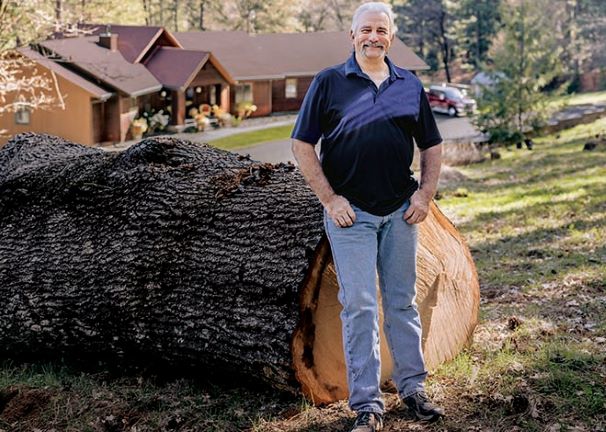
Off Beat Heart Rhythm Alerted Tim to Take Action
A minimally invasive procedure corrected Tim Taylor’s abnormal heart rhythm.
Tim Taylor spends a lot of time caring for his 17-acre property in Brownsville. “There’s always wood to be chopped, grass to be mowed,” he says. “We have goats, ponies and chickens, a barn to maintain, two tractors. I do a lot of property maintenance.”
But after a stroke in 2013, doctors discovered he had atrial fibrillation, or A-fib, an unnaturally fast heartbeat that can lead to fatigue and shortness of breath. “It got to the point where I was weak and tired all the time,” Taylor recalls. “I am pretty active, but I just didn’t have the strength. I had to come in and take multiple naps to get through the day.”
Taylor was on blood thinners for his A-fib, but he knew he would need additional treatment. His cardiologist referred him to Rajinder Singh, MD, a board-certified electrophysiologist at the Adventist Heart & Vascular Institute. Together, they came up with a plan to get his heartbeat back on track.
A race to treatment
A-fib happens when the upper chambers of the heart beat out of sync with the lower chambers, resulting in a chaotically fast rhythm. Besides feeling weak and tired, people with A-fib are at risk for blood clots caused by blood pooling in the heart.
The first step of treatment is to manage underlying causes, such as high blood pressure, sleep apnea and obesity. If the irregular heartbeat persists, the next step is often a procedure called cardioversion, in which an electrical shock resets the heart to restore its normal beat.
Taylor had a cardioversion, but his symptoms returned. “I knew that we needed to come up with an alternative,” he says.
Long-term solution
For people with more advanced A-fib, like Taylor, the final step of treatment is often ablation, a procedure that keeps the heart out of A-fib. “We had a consultation and Dr. Singh explained ablation, and we decided that was the right option for me,” he says.
For Taylor’s procedure, Dr. Singh used a catheter — a small tube placed in a blood vessel — to reach the heart. He then created small areas of scar tissue on the upper chambers of Taylor’s heart that prevent the heart muscle from generating the abnormal signals that trigger A-fib.
Active recovery
Because the procedure was minimally invasive —Dr. Singh made only a small incision in the groin to access the heart — Taylor was able to go home the same day. He’s thankful that he could have the procedure done close to home. “It feels good to be back to normal,” he says. “I just wish I would have had it done long before.”
Since his ablation, Taylor has returned to the activities he enjoyed before — caring for his property, doing woodworking projects and enjoying the outdoors. “My whole quality of life has changed for the better,” he says. “I can go out fishing on my boat again because I have the energy to do it.”
Leading the way in heart care
The team of cardiologists and electrophysiologists at Adventist Heart & Vascular Institute are highly trained to manage all heart conditions, including irregular heartbeats.
A few months ago, Rajinder Singh, MD, and his team performed their 100th ablation in one year when they helped Tim Taylor of Brownsville correct his atrial fibrillation.
“All of the staff that I interacted with were exceptional,” Taylor says. “From the time I walked in the door to get checked in to being taken care of after the procedures, I was really happy with the quality of support.”



